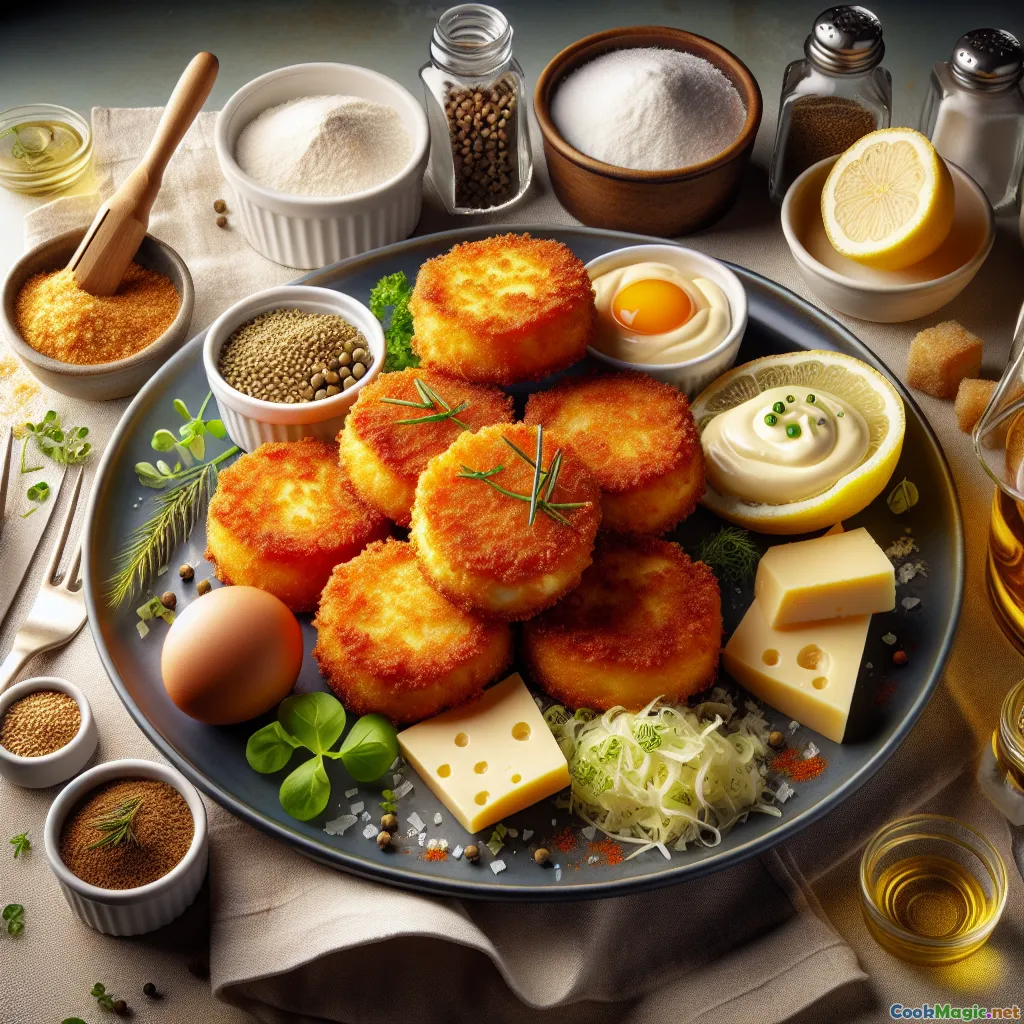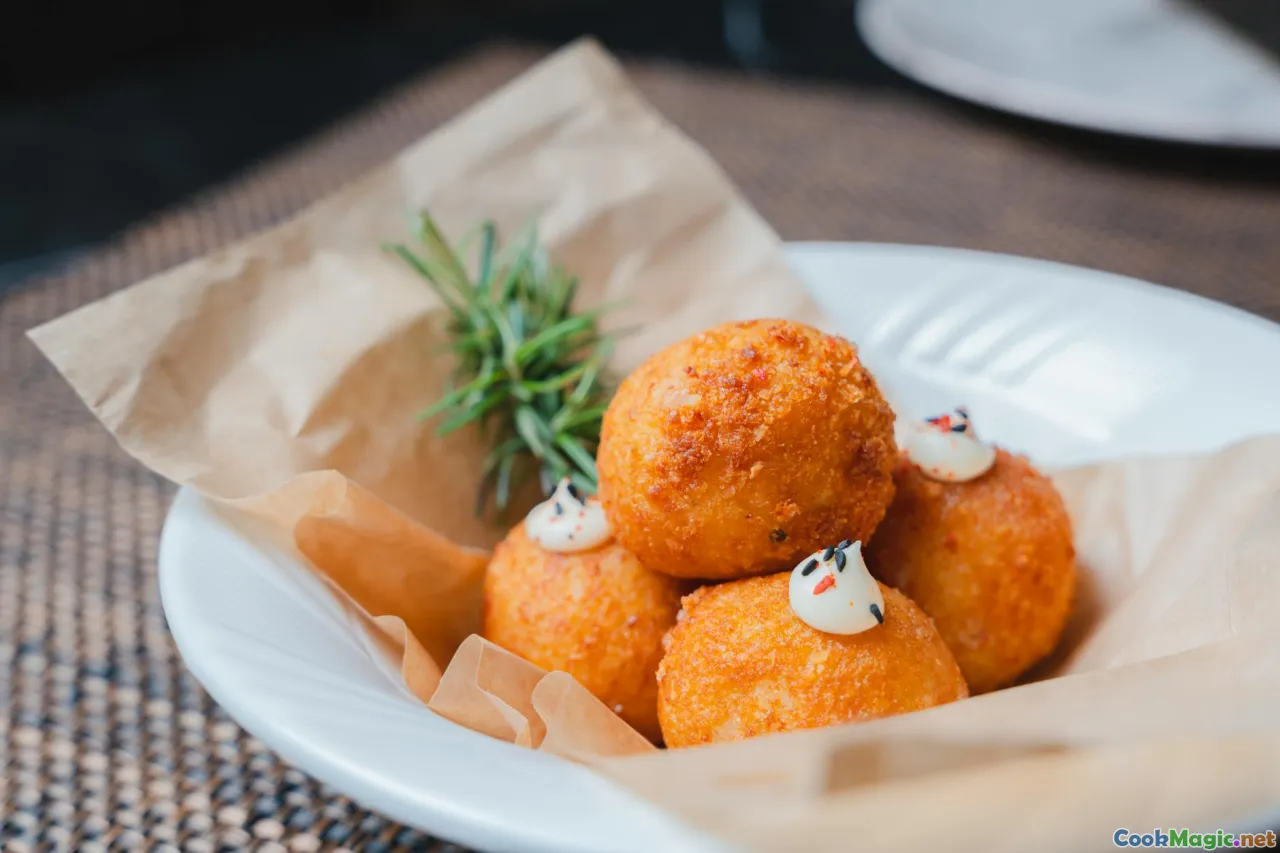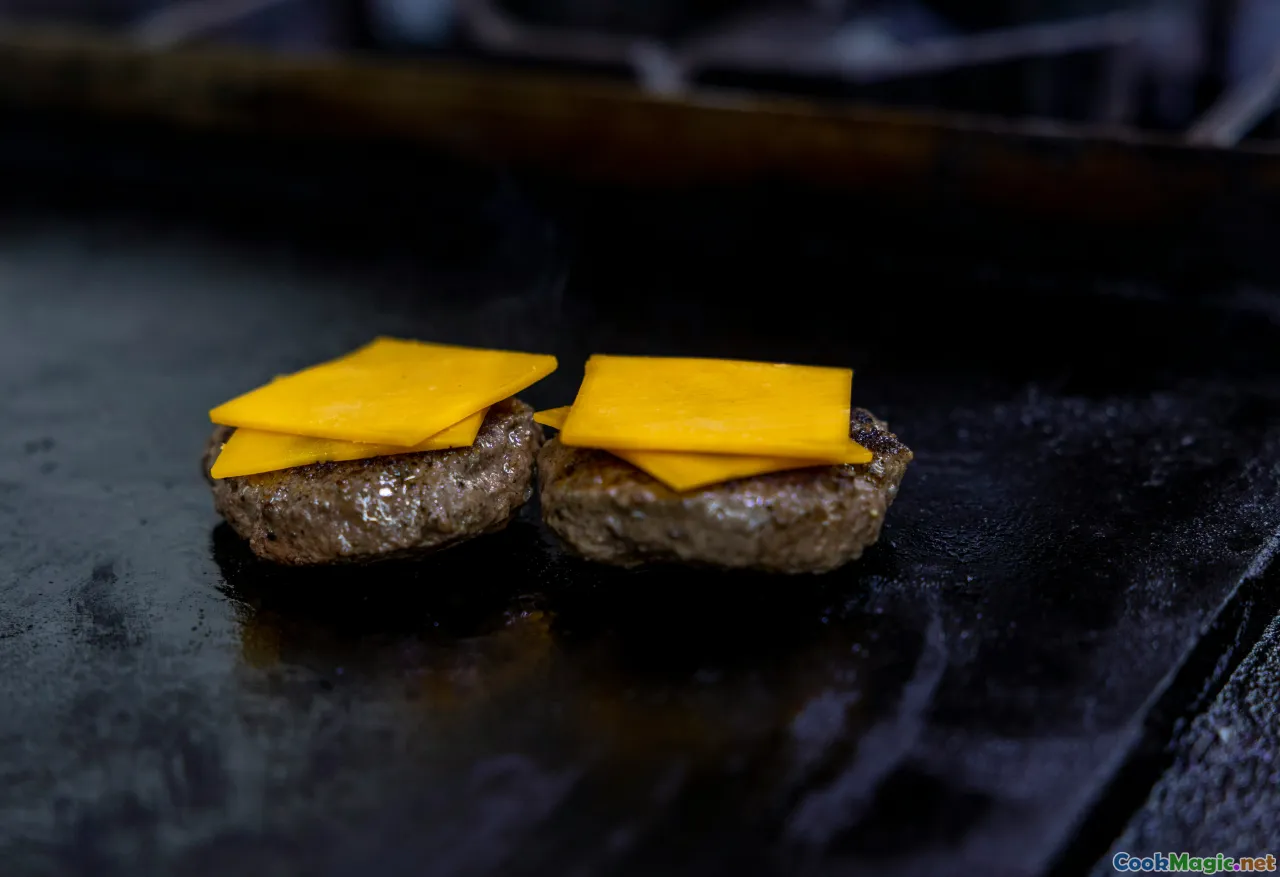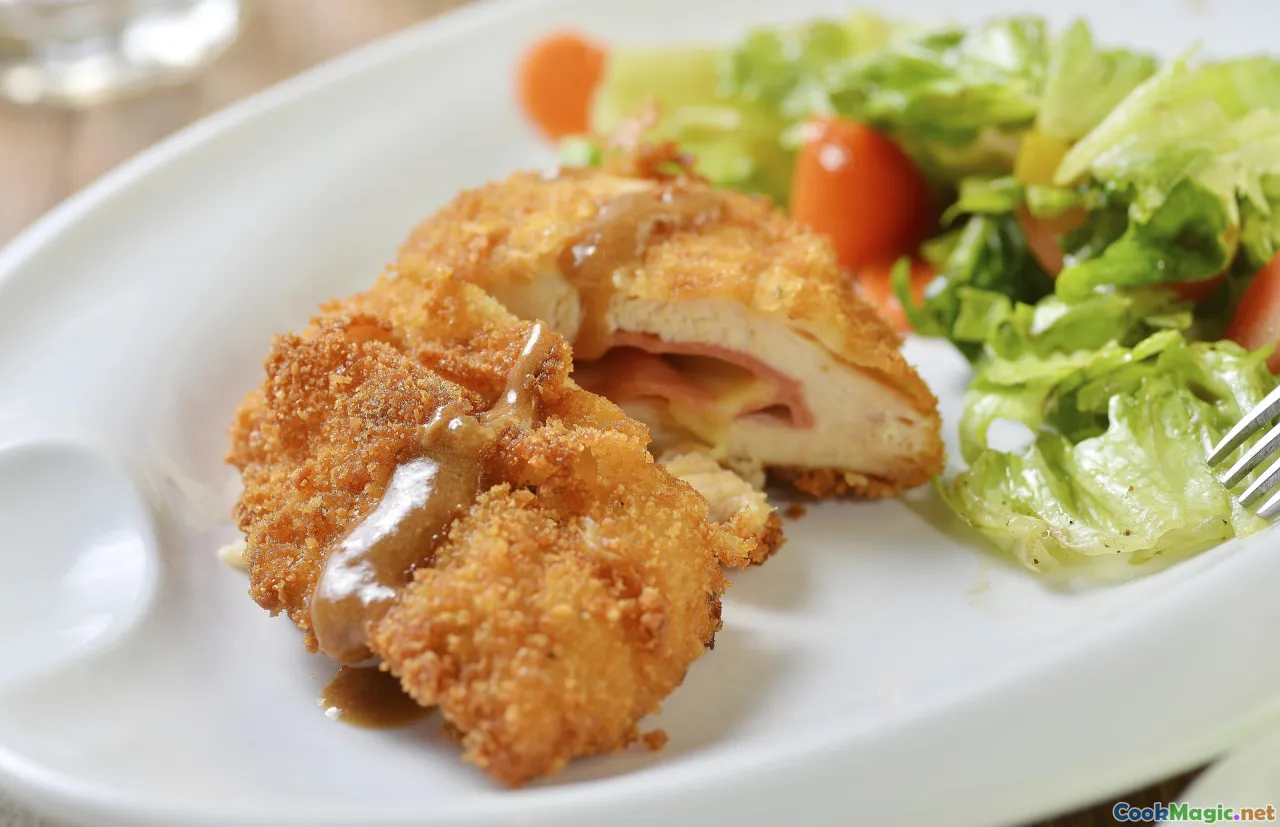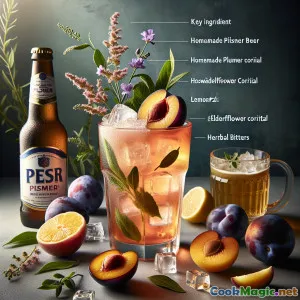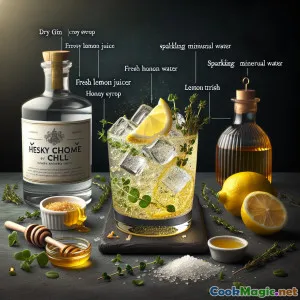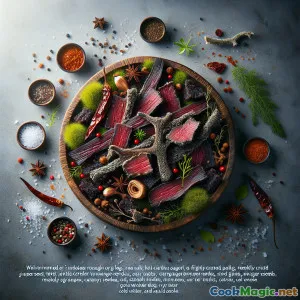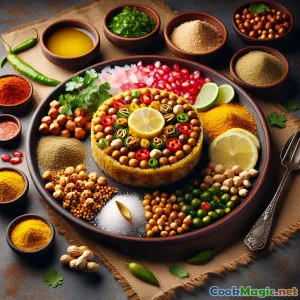
Золотые пражские жареные сырные медальоны с соусом тартар
(Golden Prague Fried Cheese Medallions with Tartare)
(0 Обзоры)0
140
октябрь 20, 2025
Сообщить о проблеме
Ингредиенты
-
480 grams Блок сыра Эдам (Эйдам)
(Cut into eight 1.5 cm-thick rounds; Gouda works too)
-
100 grams Мука универсальная
(For first dredge)
-
3 large Яйца
(для яичного смазки)
-
60 ml Тёмное чешское лагерное пиво
(Whisk into egg wash for aroma and color)
-
200 grams мелкие сухие панировочные сухари
(Classic Central European style crumbs)
-
50 grams Панко панировочные сухари
(Blend with fine crumbs for extra crunch)
-
1 tsp Семена тмина
(Signature Czech flavor)
-
1 tsp Сладкая паприка
(Добавляет тепло и цвет)
-
1 tsp Мелкая соль
(Divide between flour and crumbs)
-
1/2 tsp Чёрный перец, свежемолотый
(To season coatings)
-
900 ml Нейтральное масло для жарки
(Sunflower or canola; 3–4 cm depth for frying)
-
1 whole Лимон
(Нарежьте на дольки для подачи)
-
150 grams Майонез
(For Prague-style tartare sauce)
-
60 grams Укропные соленья, мелко нарезанные
(Traditional in Czech tartare)
-
1 tbsp Каперсы, мелко нарезанные
(Briny pop in sauce)
-
1 tsp Дижонская горчица или мягкая горчица
(Mild Czech-style preferred)
-
1 tsp Свежий Лимонный Сок
(Brightens the tartare sauce)
-
1 tbsp Свежий шнитт-лук, тонко нарезанный
(Herbal finish for sauce)
-
1/2 tsp Сахар
(Balances sauce acidity)
-
1 tbsp Вода
(Use if omitting beer to loosen egg wash)
(Cut into eight 1.5 cm-thick rounds; Gouda works too)
(For first dredge)
(для яичного смазки)
(Whisk into egg wash for aroma and color)
(Classic Central European style crumbs)
(Blend with fine crumbs for extra crunch)
(Signature Czech flavor)
(Добавляет тепло и цвет)
(Divide between flour and crumbs)
(To season coatings)
(Sunflower or canola; 3–4 cm depth for frying)
(Нарежьте на дольки для подачи)
(For Prague-style tartare sauce)
(Traditional in Czech tartare)
(Briny pop in sauce)
(Mild Czech-style preferred)
(Brightens the tartare sauce)
(Herbal finish for sauce)
(Balances sauce acidity)
(Use if omitting beer to loosen egg wash)
Питательная ценность
- Порции: 4
- Размер порции: 2 medallions (180g)
- Calories: 1120 kcal
- Carbohydrates: 0 g
- Protein: 35 g
- Fat: 78 g
- Fiber: 3 g
- Sugar: 5 g
- Sodium: 1600 mg
- Cholesterol: 140 mg
- Calcium: 850 mg
- Iron: 2.2 mg
Инструкции
-
1 - Chill and shape cheese:
Cut the cheese into eight 1.5 cm-thick disks using a round cutter or slice into squares. Pat dry, then place on a parchment-lined tray and chill while you prepare the coatings.
-
2 - Mix Prague-style tartare:
Combine mayonnaise, dill pickles, capers, mustard, lemon juice, sugar, and chives. Season with a pinch of salt and pepper to taste. Refrigerate to meld flavors.
-
3 - Set Up Dredging Station:
Place flour in one shallow dish. In a second, whisk eggs with beer (or water) and a pinch of salt. In a third, combine breadcrumbs.
-
4 - Season coatings:
Stir half the salt and pepper into the flour. Mix remaining salt, pepper, caraway seeds, and paprika into the breadcrumb blend.
-
5 - Heat Oil:
Pour oil into a deep skillet to 3–4 cm. Heat to 175°C/350°F. Keep a wire rack over a tray ready for draining.
-
6 - First breading pass:
Working one piece at a time, coat cheese in flour (shake off excess), dip in egg wash, then coat in seasoned breadcrumbs. Press gently to adhere.
-
7 - Double-bread for armor:
Repeat egg wash and breadcrumb steps for a second coating on each medallion. This prevents leaks and yields extra crunch.
-
8 - Fry in batches:
Fry 2–3 medallions at a time, 1.5–2 minutes per side, until deep golden. Maintain 170–180°C. Avoid overcrowding to keep oil hot.
-
9 - Drain and Season:
Transfer to the rack; sprinkle with a tiny pinch of salt while hot. Allow 1 minute to set the molten centers.
-
10 - Serve Prague-style:
Plate with lemon wedges and a generous spoon of tartare sauce. Serve immediately while the centers are oozy.
Cut the cheese into eight 1.5 cm-thick disks using a round cutter or slice into squares. Pat dry, then place on a parchment-lined tray and chill while you prepare the coatings.
Combine mayonnaise, dill pickles, capers, mustard, lemon juice, sugar, and chives. Season with a pinch of salt and pepper to taste. Refrigerate to meld flavors.
Place flour in one shallow dish. In a second, whisk eggs with beer (or water) and a pinch of salt. In a third, combine breadcrumbs.
Stir half the salt and pepper into the flour. Mix remaining salt, pepper, caraway seeds, and paprika into the breadcrumb blend.
Pour oil into a deep skillet to 3–4 cm. Heat to 175°C/350°F. Keep a wire rack over a tray ready for draining.
Working one piece at a time, coat cheese in flour (shake off excess), dip in egg wash, then coat in seasoned breadcrumbs. Press gently to adhere.
Repeat egg wash and breadcrumb steps for a second coating on each medallion. This prevents leaks and yields extra crunch.
Fry 2–3 medallions at a time, 1.5–2 minutes per side, until deep golden. Maintain 170–180°C. Avoid overcrowding to keep oil hot.
Transfer to the rack; sprinkle with a tiny pinch of salt while hot. Allow 1 minute to set the molten centers.
Plate with lemon wedges and a generous spoon of tartare sauce. Serve immediately while the centers are oozy.
Подробнее о: Золотые пражские жареные сырные медальоны с соусом тартар
Why these medallions shine
Golden Prague Fried Cheese Medallions are my love letter to Prague’s pub culture—where comfort is king and a plate of sizzling, breaded cheese is never far from a crisp lager. Think of them as a refined nod to the beloved Czech classic, smažený sýr, but shaped into neat rounds with a seeded breadcrumb that crackles. The double-breading creates an armor that keeps the cheese gloriously gooey without bursting. A squeeze of lemon and a spoon of Prague-style tartare sauce bring brightness, cutting through the richness like sunlight on the Vltava.
A brief history and cultural heartbeat
Fried cheese, especially Eidam (Edam) or Hermelín (a Camembert-style cheese), is a pillar of Czech pub menus, school canteens, and street stalls alike. While visitors may first encounter it as a quick street snack tucked into a bun, locals know its many lives: accompanied by fries, a simple salad, or just a cold beer and good company. Prague—where café sophistication meets tavern conviviality—embraces the dish’s democratic appeal. You’ll find it in neighborhood hospody (pubs), bistros, and late-night kiosks near tram stops, each with its own sauce and crumb signature. Caraway in the coating nods to a classic Czech spice palette, and the dark lager whisper in the egg wash is a friendly salute to the city’s brewing tradition.
Technique tips for perfect ooze
- Chill and dry the cheese: Cold, dry surfaces help the coating cling and minimize leaks. Patting the medallions and a brief chill are small steps that pay off.
- Double-bread: Two coats of egg and crumbs make a sturdy shell. Press the breadcrumbs lightly so they adhere without compacting into a hard crust.
- Control oil temperature: Aim for 175°C/350°F. Too cool, and the crust absorbs oil; too hot, and the exterior browns before the center softens. A thermometer is your best friend.
- Work in batches: Overcrowding crashes the temperature. Fry two to three pieces at a time for consistent color and melt.
- Rest on a rack: Wire racks keep the underside crisp—paper towels can steam the crust.
- Season hot: A whisper of salt right after frying amplifies aroma and snap.
Sauce and serving suggestions
Tatarská omáčka (Czech tartare) is more than mayonnaise; the minced pickles, a hint of mustard, capers, and chives make it zingy and herbal. Lemon wedges are non-negotiable—one cheeky squeeze brightens each bite. For a fuller pub-style plate, add fries or buttered new potatoes and a simple cabbage slaw. If you’re feeling street-food nostalgic, tuck a hot medallion into a soft roll with tartare and lettuce—Prague in your hands.
Ingredient swaps and variations
- Cheese: Edam/Eidam is classic. Gouda melts beautifully; for funk, try Hermelín rounds (reduce frying time slightly). Smoked cheese adds campfire depth.
- Crumb: Use only fine breadcrumbs for tradition, or blend with panko for extra crunch. Gluten-free crumbs and rice flour work well if necessary.
- Spices: Caraway is distinctly Czech, but you can play—garlic powder for bistro flair, hot paprika for a kick, or a pinch of marjoram for herbal warmth.
- Beer wash: Dark lager enriches color and aroma. If omitted, loosen the eggs with a splash of water or milk.
Make-ahead and freezer-friendly
Breaded medallions freeze beautifully. Arrange on a tray to freeze, then store in a bag for up to a month. Fry directly from frozen, adding 30–45 seconds to the cook time. Having them ready to go turns any evening into a Prague pub vignette—no reservations required.
Air fryer and stovetop notes
- Air fryer: Spray the breaded medallions lightly with oil. Cook at 200°C/400°F for 7–9 minutes, flipping halfway. Expect slightly less ooze than deep-fried, but still satisfyingly crisp.
- Shallow fry: A 1–1.5 cm oil depth in a skillet works; baste the top with hot oil to promote even coloring. Keep a steady medium-high heat.
Pairings
- Beer: Classic Czech pale lager or a malty tmavé (dark lager). The bitterness scrubs the palate while carbonation lifts the richness.
- Wine: A dry Riesling or Grüner Veltliner, whose acidity and minerality echo the lemon and pickles.
- Non-alcoholic: Sparkling water with lemon or a tart apple spritzer—refreshing and palate-cleansing.
Troubleshooting
- Cheese burst: Usually too hot oil or thin coating. Double-bread and reduce the heat slightly.
- Greasy crust: Oil too cool or overcrowded pan. Fry in smaller batches and reheat oil between rounds.
- Coating separating: Cheese too warm or surface damp. Pat dry and chill briefly before breading.
Why it’s uniquely “Prague”
It’s the details: the caraway-kissed crumb, the dark-lager sheen, and the confident tartare with crunchy pickle bits. They echo the city’s rhythm—historic, hearty, and a touch playful. Eating one warm medallion, hearing the crackle as your fork breaks the shell to reveal a lava-soft center, you can almost imagine tram bells and cobblestones underfoot.
Whether you serve these as an elevated appetizer, a late-night snack, or a crowd-pleasing party platter, Golden Prague Fried Cheese Medallions carry the soul of Czech comfort straight to your table—simple ingredients transformed by care, tradition, and the promise of a good beer and better company.
